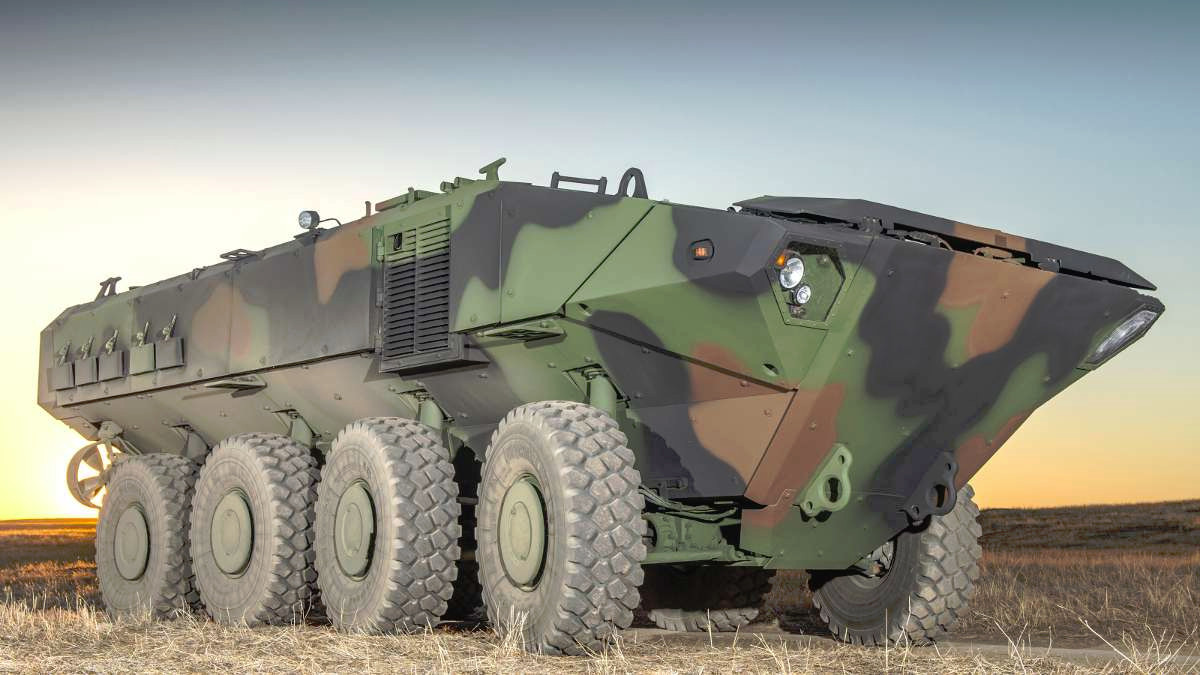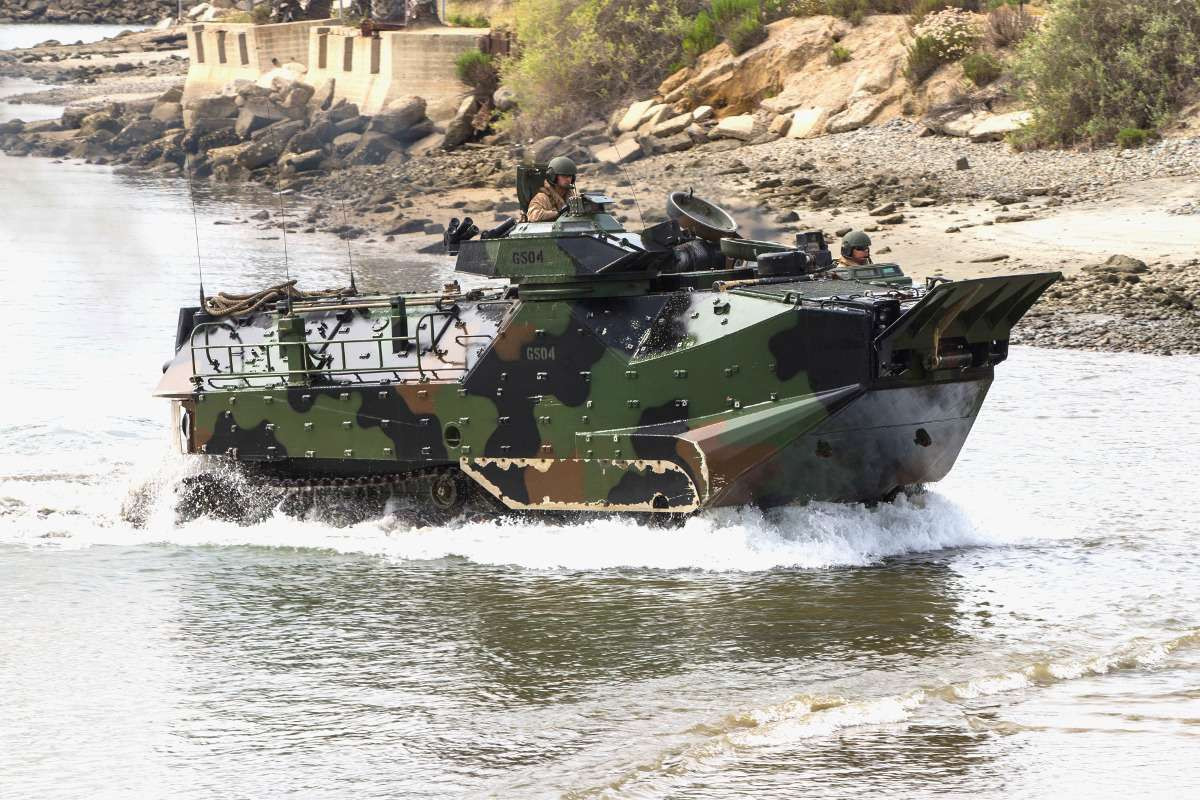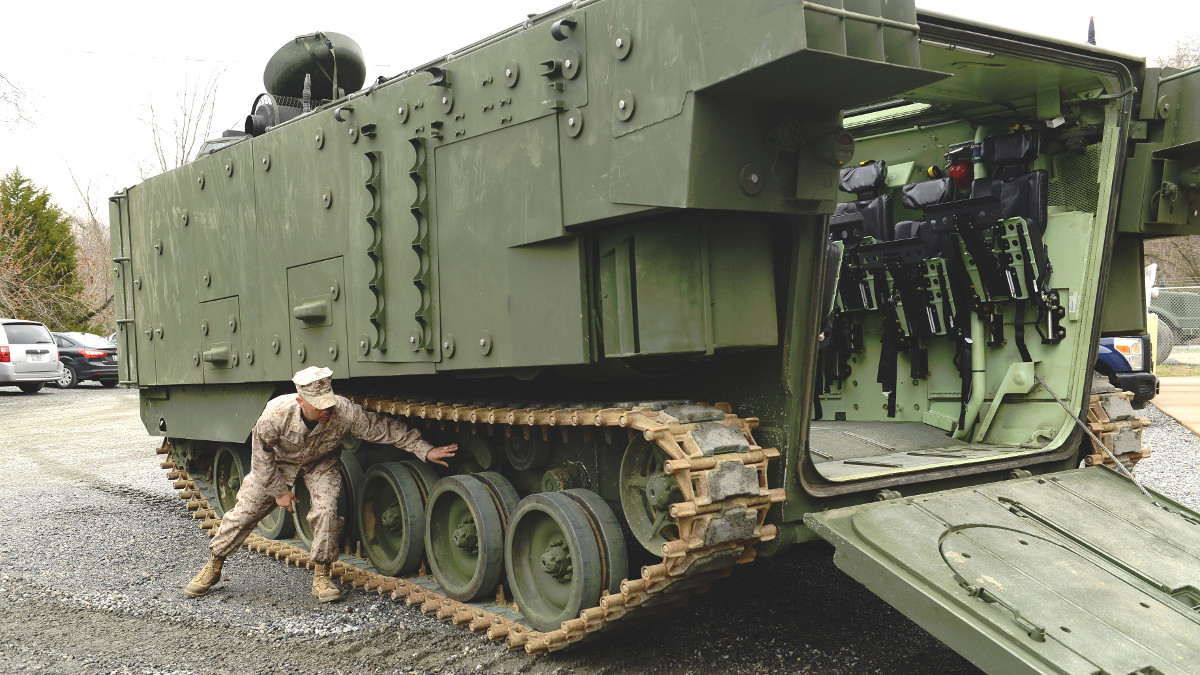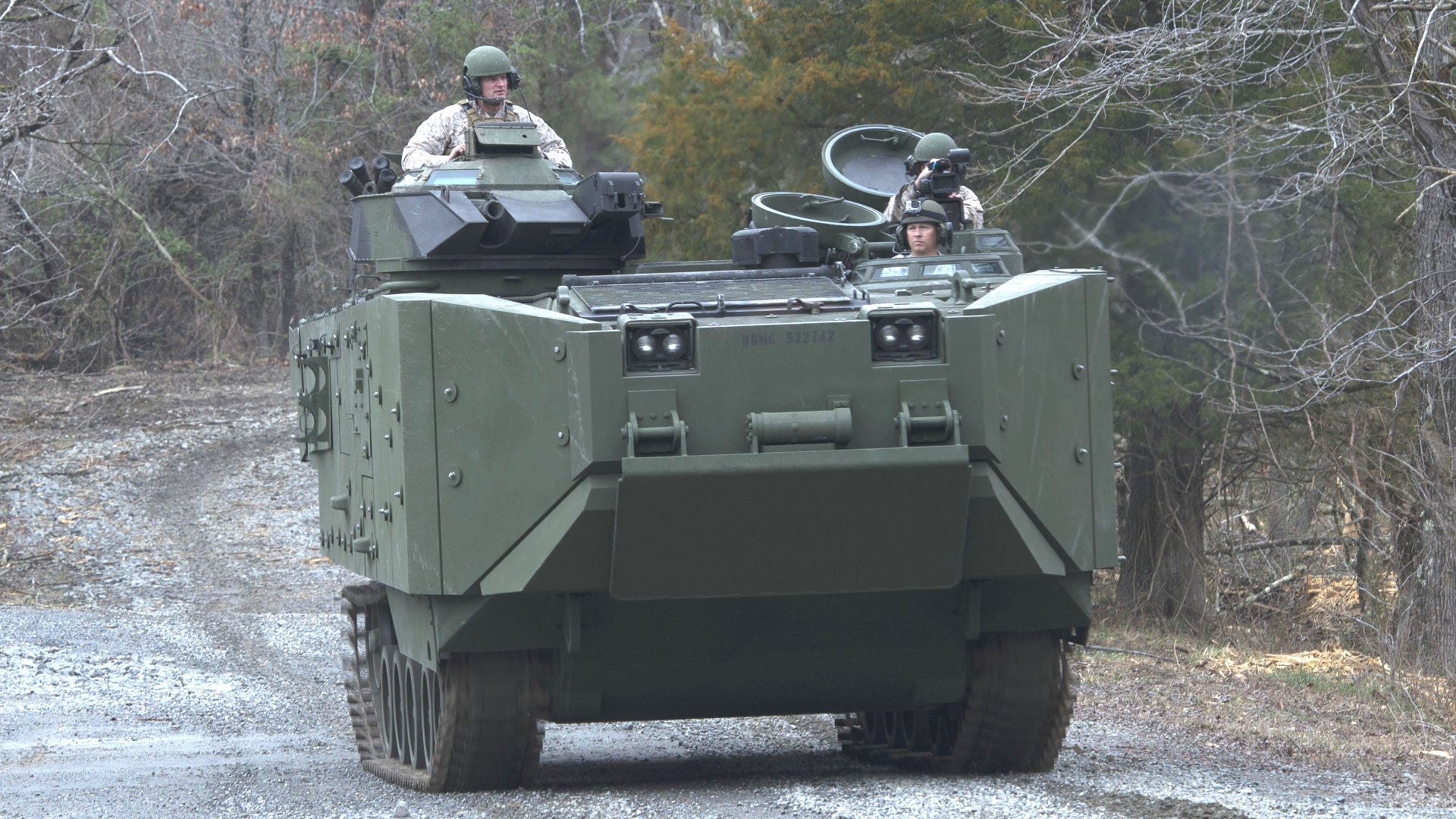The U.S. Marine Corps has canceled plans to upgrade its tracked Assault Amphibious Vehicle family, or AAVs, as it begins to acquire a new fleet of wheeled Amphibious Combat Vehicles, or ACVs. However, the service still plans to operate a portion of the older AAVs through at least 2030 and it could take up to five years just to find appropriate funding to begin increasing production of the ACVs to fully meet the Marines’ demands.
Defense News was first to report that the Marines had axed the AAV update project, known formally as the Assault Amphibious Vehicle Survivability Upgrade program, or AAV-SU, on Sept. 24, 2018. The Corps had issued a stop work order to defense contractor SAIC, which was building the kits that include improved underbelly and hull armor, blast-absorbing seats for the crew and passengers, along with a new engine, transmission, and suspension components to improve the vehicle’s performance even with the added weight.
“Rather than continue to invest in that vehicle that, even in upgraded form, will not provide adequate maneuverability, survivability, or ship-to-shore performance, the Marine Corps believes these funds would be better used elsewhere to support modernization initiatives across the force.” Manny Pacheco, a spokesperson for the Program Executive Office for Land Systems, told Defense News. “The key there really is, ACV performed a lot better than expected,” he added in separate comments to USNI News.
SAIC first began developing the AAV-SU upgrade in 2015 and the cost of updating a single one of the amphibious tracked vehicles was approximately $1.65 million. The Marines will still take delivery of four “production control modules” from the Virginia-headquartered defense contractor, but it’s unclear what will happen to them then. SAIC had been under contract to upgrade 21 vehicles, with the Corps’ original plan being to update more than 390 AAVs in total to ensure they remain a capable part of the force into the 2030s.

In June 2018, the Corps announced they had picked BAE Systems’ offering, which the company had developed in cooperation with Italy’s Iveco, as the winner of the ACV 1.1 program, the first of what could be three phases in the development of the wheeled vehicles. That $198 million contract covers the cost of 30 ACVs and well as various ancillary items. The deal also gives the Marines the option to expand the purchase to a fleet of 200 vehicles.
The wheeled ACV is smaller, lighter, and has less carrying capacity than the older AAVs and offers debatable advantages in mobility and survivability in its present form over the Cold War-era design, all of which you can read about in more detail here. Each one of the BAE-Iveco vehicles comes along with a $4 million price tag, as well, making them substantially more expensive than the AAV-SU upgrade package.
“The fact that the deliveries of ACV and AAV SU were approximately two [fiscal year] quarters apart, basically six months or so apart, I think the decision was made, let’s just focus our resources on ACV,” Pacheco explained to USNI News. In the long-term, “the vision for ACV is that in the out years we’ll be able to pick up the pace on deliveries and replace the AAVs a little bit quicker than originally planned.”

But regardless of the merits of one vehicle versus the other, it’s unclear what the Marines actually stand to gain from canceling the AAV-SU program in the near- or mid-term timeframes. Pacheco acknowledged that the decision would free up very little of the funding the Corps received for the 2018 fiscal year and there is only $96 million allotted to the upgrade project in the Marines’ expected budget for the 2019 fiscal cycle – which would cover the cost of more than 100 update packages, but only around 24 ACVs.
Far more importantly, the Marine Corps spokesperson told USNI News that it could take between three to five years – 2021 to 2023 – for the service to secure the funding it needs to really get the ACV program going. We don’t know if that refers to buying the full 200 vehicles under the present contract or awarding additional contracts.
A purchase of 200 ACVs would not be nearly enough to replace the nearly 900 AAVs on a one-for-one basis. Even with follow-on contracts, the AAVs will continue to support Marine operations for the foreseeable future.

He also noted that service was already working on a number of different modernization efforts, including plans to replace its aging Humvee wheeled vehicles with new Joint Light Tactical Vehicles (JLTV), which could compete for those same monetary resources. After JLTV purchases begin to slow, “hopefully there will be a little breathing room in a little bit where we can put a little more money in the ACV line,” Pacheco said to USNI News.
By their own admission, the Marines do not appear to have a clear plan for any money they do save by canceling the AAV-SU project. They might even just put it back into other upgrades for the tracked vehicles, including improved communications equipment and a new remote weapons station, according to Pacheco, which calls into question the entire argument about there being a lack of value in continuing to invest in the platform.
The Marines also stand to lose out on the benefits of a relatively low-cost upgrade project they already funded in the first place. The AAV remains in production and the U.S. military concluded a deal worth more than $83 million with BAE Systems to purchase three dozen of the tracked vehicles on behalf of Taiwan in June 2018. Japan began receiving its first examples in 2017 to support its plans to expand its amphibious forces. These countries, along with other long-standing American partners who operate AAVs, such as South Korea and Thailand, could still be interested in the AAV-SU upgrades, which might further drive down the unit price.

None of this is to say that the Marines shouldn’t be working to replace the AAVs, a design that first entered production in 1972 and has a checkered combat record. At the same time, the examples they have are going to be in service to some degree for years to come and the development of the upgrade package – which the vehicles sorely need – is already bought and paid for.
In what could easily turn out to be a short-sighted decision, in canceling the AAV-SU program, the Corps’ looks to be positioning itself to be stuck operating vehicles that are less capable and survivable without any guarantee that it will be able to speed up the acquisition of ACVs.
Contact the author: jtrevithickpr@gmail.com
